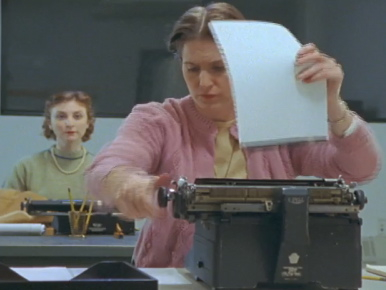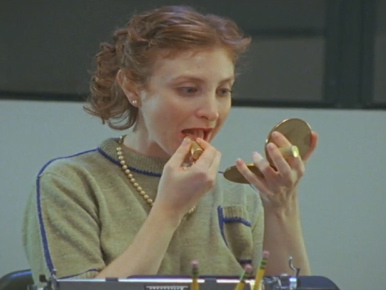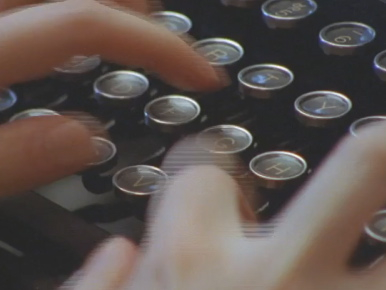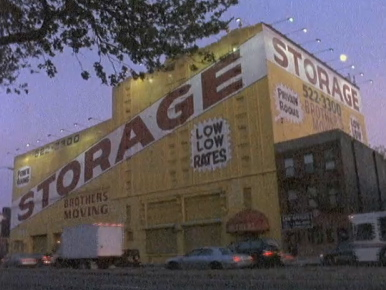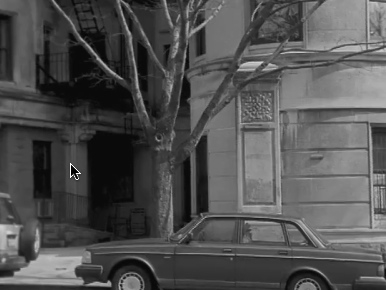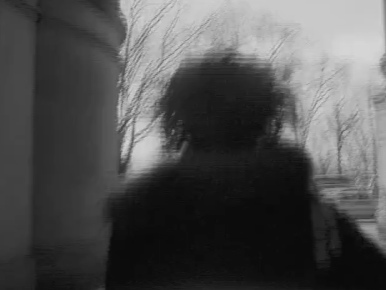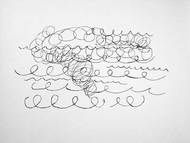Part of Summer 2011
Co-presentation with TIFF Cinematheque
The Perlin Papers by American artist Jenny Perlin is a cycle of eight short films that reveals stories of domestic espionage during the Cold War period in the United States. The films focus on overlooked, incomplete and banal documents from the 1940s and 1950s in an effort to unpack history and connect it to the present. The title refers to a 250,000-page archive located at Columbia University containing many of the FBI documents related to the investigation, trial and 1953 execution of Julius and Ethel Rosenberg, US citizens who were convicted of conspiracy to violate the Espionage Act of 1917. For nearly two decades after the execution, the FBI tracked hundreds of people tangentially connected to the case. The archive is named for a distant relative of the artist, Marshall “Mike” Perlin, a civil liberties lawyer whose work with the Rosenberg children, Michael and Robert Meeropol, resulted in the declassification of the documents. The first six films in Jenny Perlin’s striking and elegant cycle are direct representations of documents in the Perlin Papers archive. The last two films are, respectively, a fiction and an observation.
Jenny Perlin is an artist who lives in Brooklyn, NY. Her practice in 16mm film, video and drawing incorporates innovative stylistic techniques in an effort to work with and against documentary traditions. (TIFF Cinematheque)
“Much of Perlin’s practice looks closely at how the sweeping statements of history are reflected in specific details of human experience.”—MoMA
Programme:
Letter, 2010 | 1 min. | 16mm | BetaSP
Letters of varying emotional tone feature prominently in the Perlin Papers archive. The FBI read, translated, copied, stored and replied to these letters throughout the 1940s and into the 1970s. U.S. citizens wrote letters to turn in their neighbors, retract petition signatures, express outrage, and beg for forgiveness. The single re-animated letter in this film reflects the climate of fear and condemnation that imbued U.S. culture in the 1950s. This short film serves as an introduction to the terms and themes of the Perlin Papers series.
Leads, 2009 | 6 min. | 16mm | BetaSP
This 16mm film replicates information the FBI wrote in surveillance notebooks about the daily life of a woman, Olga Pravdina, living in New York in the late 1940s. Up to five FBI agents were required to observe and follow her as she went about her daily activities, and to write down every single thing she did from morning to night. The notebooks are filled with descriptions such as “bought stockings, 97 cents,” and “went to movies, sat in front row.” It is fascinating to me that men were hired to move their bodies through the city connected to this woman, experiencing her days so intimately. It is unknown if Pravdina or the many other women described in the files ever learned about these notes of their daily lives.
Division, 2010 | 1 min. | 16mm | BetaSP
Numerous pages in the Perlin Papers archive list names, addresses, and phone numbers of people across the United States, and the texts command FBI agents in different geographic divisions to find out specific information and send it back to headquarters.
Transcript, 2006 | 12 min. | 16mm | BetaSP
The Perlin Papers is an archive located at Columbia University Law School that contains 250,000 documents related to the case of Julius and Ethel Rosenberg, who were tried and executed in 1953 for alleged espionage for the Soviet Union. For two decades after the execution, the FBI spied on hundreds of people tangentially connected to the case. The archive is named for my relative, Marshall Perlin, a lawyer who forced the U.S. government to release the papers in the early 1970s, in one of the first successful uses of the Freedom of Information Act in the U.S. The text comes from an October 1953 transcript of a dinner party that took place four months after the Rosenbergs? execution. On October 30, informant NY-964-S eavesdropped on two couples having a dinner party at an apartment in the West Village, New York. Both of these couples had been friends of the Rosenbergs, and were being called to testify in front of the House Un-American Activities Committee about their roles in the “Commie spy ring.” NY-964-S cannot hear many details of the conversation and fills in words he cannot understand. Most of the text is inaudible, but one gathers that the guests at the dinner party know they are being spied on. The fragmented text reveals clues to the culture in which it was captured, and by extension, to current conditions. I worked with actors to re-create this fragmentary script to compose a soundtrack to accompany desolate, minimal images of a mysterious corridor in a New York apartment building.
Cast:
Kittson O’Neill as Vivian Pataki
Ross Beschler as Ernest Pataki
David Brooks as Max Finestone
Rachel Schwartz as Annette Finestone
Lanna Joffrey as Narrator
Inaudible, 2006/2010 | 2 min. | 16mm
Inaudible is an animated film that makes visible all the words that the FBI could not hear or imagined were being spoken in the film Transcript. Most of the discussion, inaudible, is dutifully transcribed, as the word “inaudible” comes up again and again on screen. Companion film to Transcript.
Notes 2006/2010 | 3 min. | 16mm
Harry Gold, codename “GOOSE,” was convicted in 1951 for passing secrets of the atom bomb from physicist and spy Klaus Fuchs to Soviet agents. The animations in this film are copies of Gold’s absentminded drawings, scribbled over drafts of his resume and cover letter to the Atlantic Refining Company, Personnel Department, Philadelphia, Pennsylvania, in 1948.
Mimeograph 2010 | 21 min. | 16mm | BetaSP
Mimeograph is a fictional representation of a day in the life of two anonymous women whose hard-working hands were responsible for typing up FBI documents in which regular citizens reported on each other. I am fascinated with the work of these women who performed innumerable hours of labor to produce the Perlin Papers between the 1940s and the 1970s. I wonder if they read the documents as they typed them, and how they felt about the proceedings, spying, wiretaps, and covert operations taking place. This film is a link between the anonymity of archival documents and the human aspect of the effects of policies on individual lives.
Storage 2008 | 5 min. | 16mm
The next installment of the Perlin Papers series. A large bright yellow building announcing itself as STORAGE: PRIVATE ROOMS: BROTHERS STORAGE dominates the frame and inspires speculation.
Music: Piano Sonata by Aaron Copland (Movement II, Vivace), performed by Raymond Clarke. Special thanks to Adam Marks.
Films from the Perlin Papers have shown at the following venues:
Version Animation Biennial of the Moving Image, Geneva, Switzerland (2006), The Kitchen, New York (2006-07), Galerie M+R Fricke, Düsseldorf (2006), The Museum of Modern Art, New York, (2007), Rotterdam Film Festival, The Netherlands (2007), New York Underground Film Festival, New York (2007), Images Film Festival, Toronto, Canada (2007), Videoform/Film Form, Hamburg, Germany (2008), IFC Center, New York (2008) Gallery TPW, Toronto, Canada (2008), Casino Luxembourg, Luxembourg City, (2008), MUSAC, Leon, Spain (2010), Gavle Konstcentrum, Sweden (2010)
Funding for the Perlin Papers provided by
LEF Moving Image Fund
Mount Holyoke College
American Center Foundation, Geneva, Switzerland
IASPIS, Stockholm, Sweden
Postproduction Services provided by The Standby Program, New York
Special thanks to Whitney Bagnall, Diamond Law Library, Columbia University, New York
